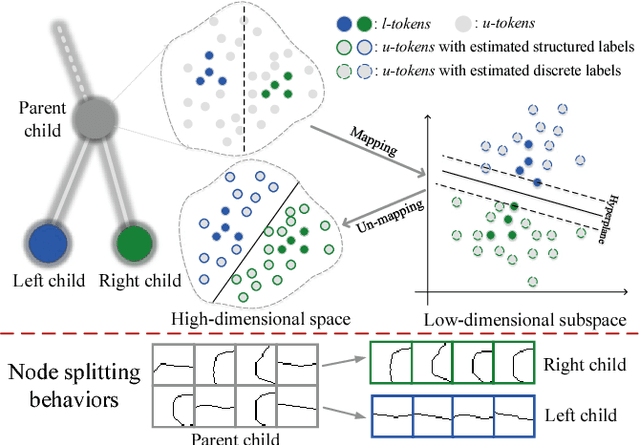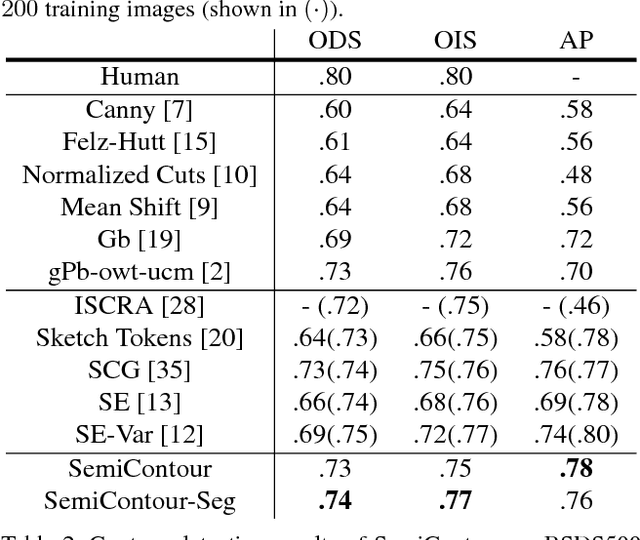SemiContour: A Semi-supervised Learning Approach for Contour Detection
Paper and Code
May 17, 2016



Supervised contour detection methods usually require many labeled training images to obtain satisfactory performance. However, a large set of annotated data might be unavailable or extremely labor intensive. In this paper, we investigate the usage of semi-supervised learning (SSL) to obtain competitive detection accuracy with very limited training data (three labeled images). Specifically, we propose a semi-supervised structured ensemble learning approach for contour detection built on structured random forests (SRF). To allow SRF to be applicable to unlabeled data, we present an effective sparse representation approach to capture inherent structure in image patches by finding a compact and discriminative low-dimensional subspace representation in an unsupervised manner, enabling the incorporation of abundant unlabeled patches with their estimated structured labels to help SRF perform better node splitting. We re-examine the role of sparsity and propose a novel and fast sparse coding algorithm to boost the overall learning efficiency. To the best of our knowledge, this is the first attempt to apply SSL for contour detection. Extensive experiments on the BSDS500 segmentation dataset and the NYU Depth dataset demonstrate the superiority of the proposed method.
 Add to Chrome
Add to Chrome Add to Firefox
Add to Firefox Add to Edge
Add to Edge